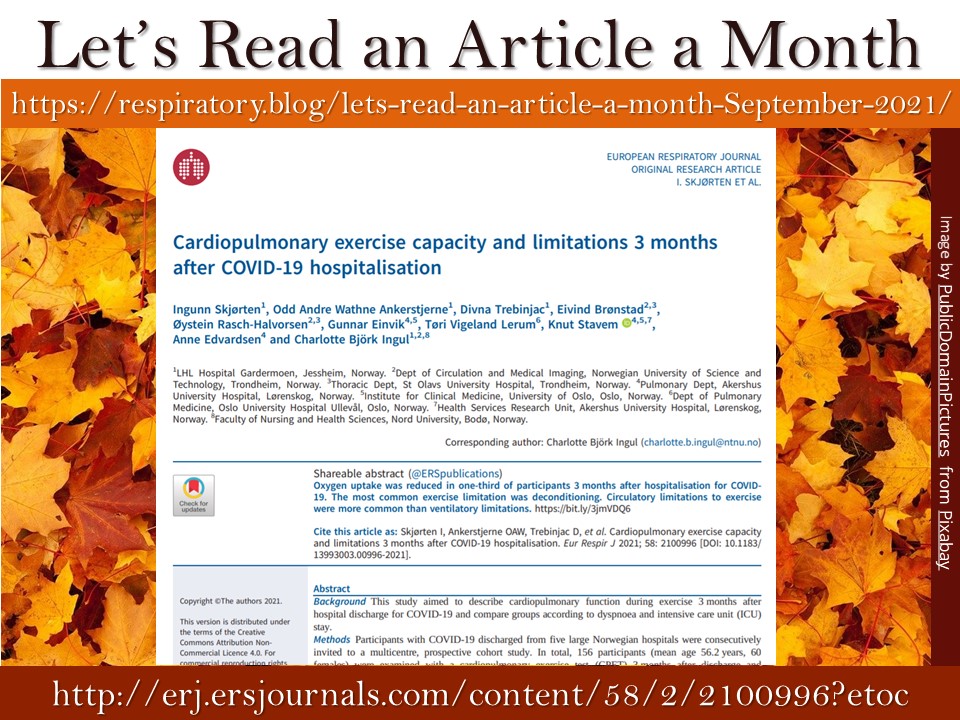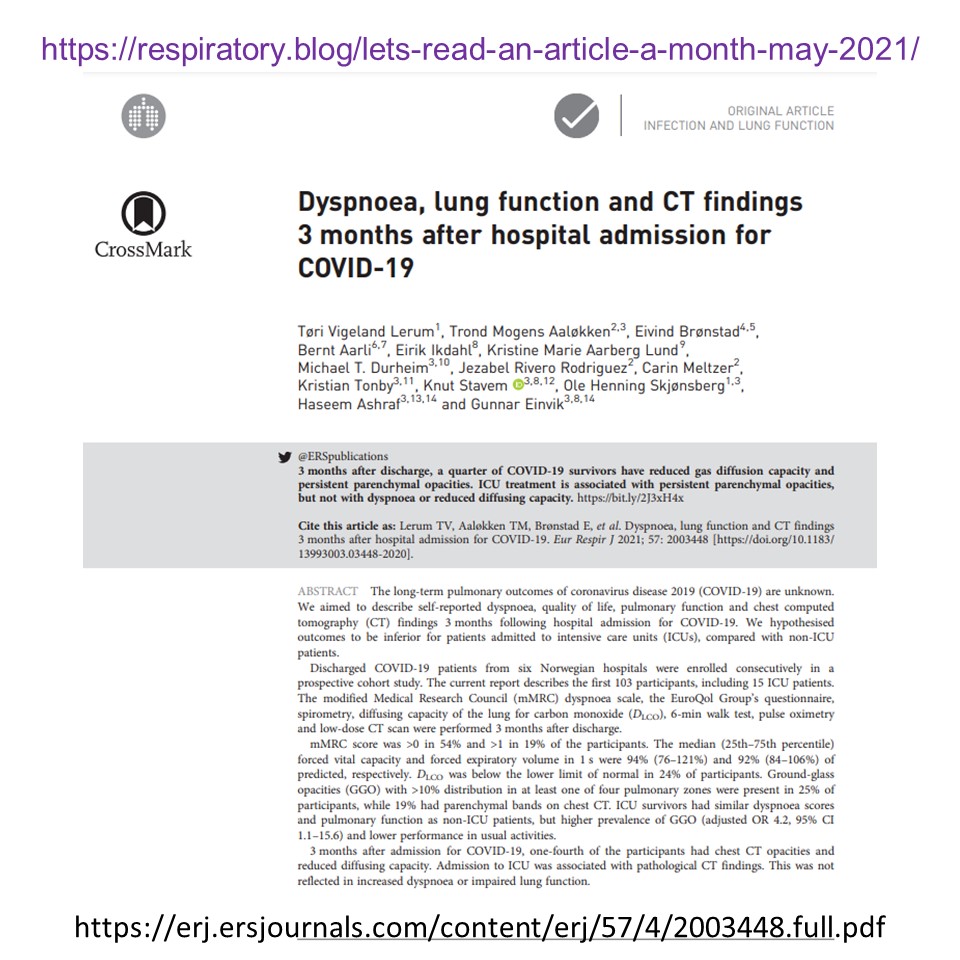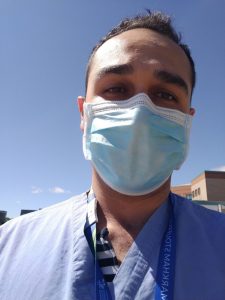
Every month I try to read an open-access article. After reading the article, I share the title and associated link with my followers. This is to encourage clinicians to read articles, stay up to date, and continue to grow.
This month I found a piece on cardiopulmonary exercise capacity and COVID19 recovery. The objective of this paper is to “determine cardiopulmonary function during exercise 3–4 months after hospital discharge for COVID-19 compared with a reference population and to describe the characteristics of participants with exercise limitations. ” p2.
Cardiopulmonary exercise capacity and limitations 3 months after COVID-19 hospitalisation
By: Ingunn Skjørten, Odd Andre Wathne Ankerstjerne, Divna Trebinjac, Eivind Brønstad, Øystein Rasch-Halvorsen, Gunnar Einvik, Tøri Vigeland Lerum, Knut Stavem, Anne Edvardsen, and Charlotte Björk Ingul
European Respiratory Journal 2021 58: 2100996; DOI: 10.1183/13993003.00996-2021
Link to the article: https://erj.ersjournals.com/content/58/2/2100996?etoc
The reasons I found this article interesting
- Regaining exercise capacity after COVID-19 is an important finding (p7).
- Brings more weight to self-reported dyspnea as it was “associated with lower ventilatory efficiency and lower V′O2peak·kg−1 due to higher BMI” (p7).
- In order of relevance: deconditioning, circulatory factors, and ventilatory limitation were the top three exercise limitations (p7).
This is a great article so I encourage you to take the time to read it.
Happy learning and reading!
Farzad Refahi
September 30, 2021
https://respiratory.blog/lets-read-an-article-a-month-september-2021/

